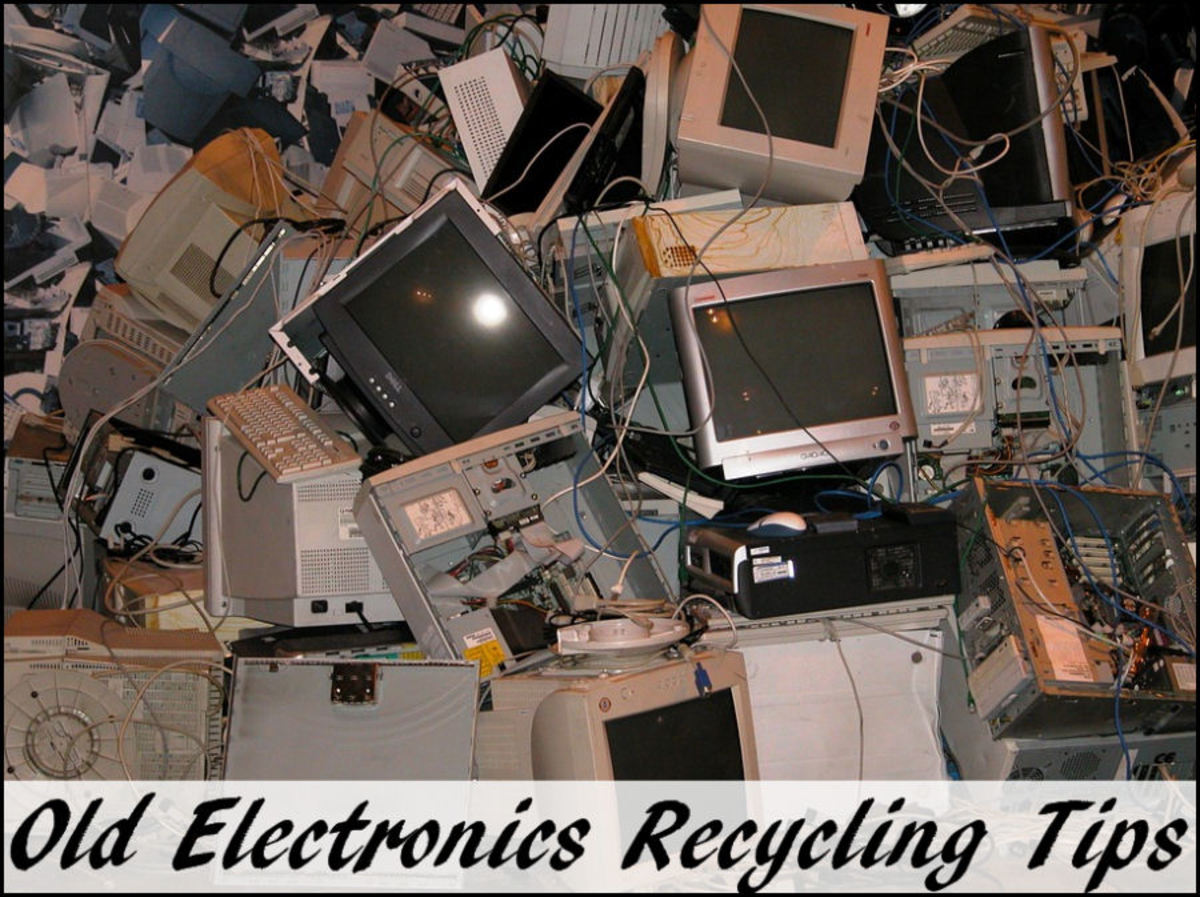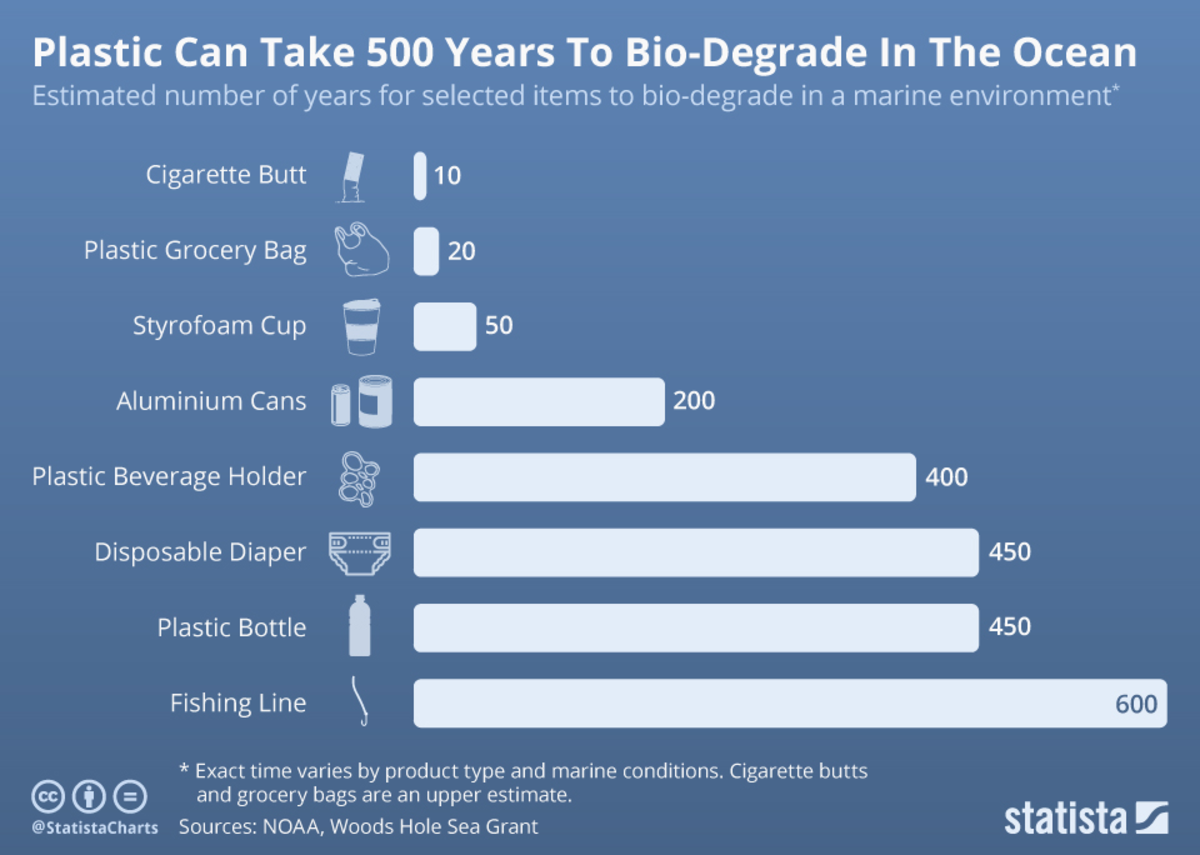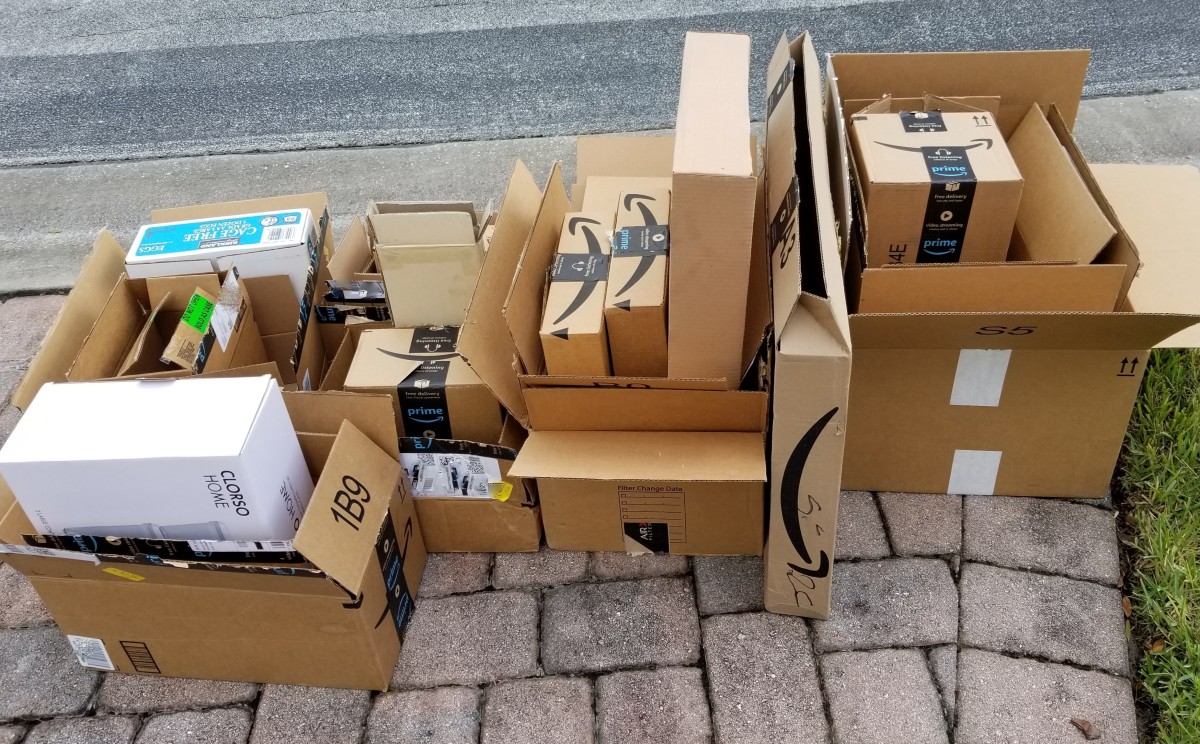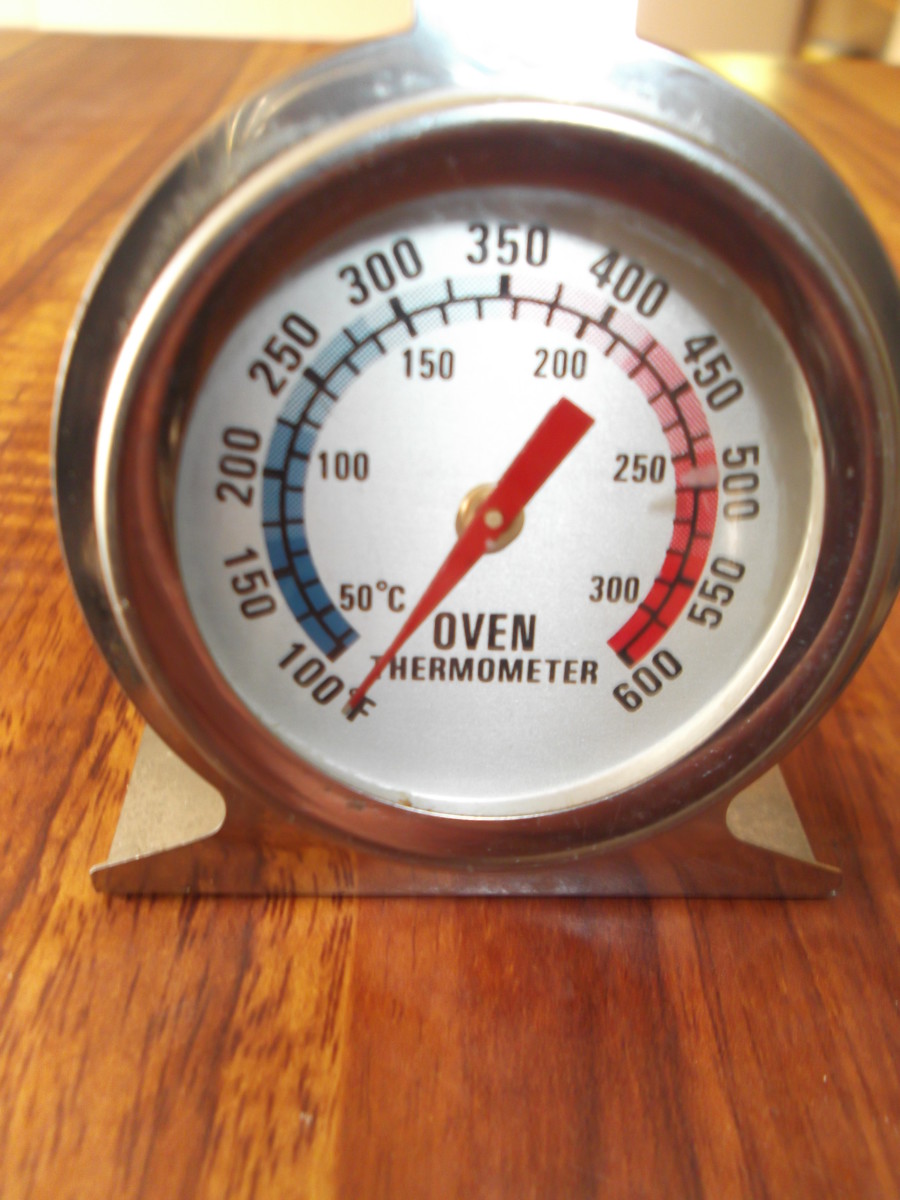Methods on Recycling Household Waste Materials
Introduction.
Recycling waste materials that gradually build up within the common household of today, is a way of helping to reduce the overall consumption levels of fresh raw materials. Also, studies conducted by the Technical University of Denmark according to the Economist found that 83% of cases, showed that recycling is the most efficient method to dispose of household waste. Household recyclable materials include; plastic, paper, cardboard, glass, textiles, aluminum, recyclable household appliances or electronic waste. Recycling is also a method of giving something back to the world we know and cherish. Which in turn, plays a significant role in saving today’s environment. Whereas, converting recyclables into new materials or objects for our everyday use, helps to reduce energy usage, air pollution, and water pollution world-wide.
Recycling.
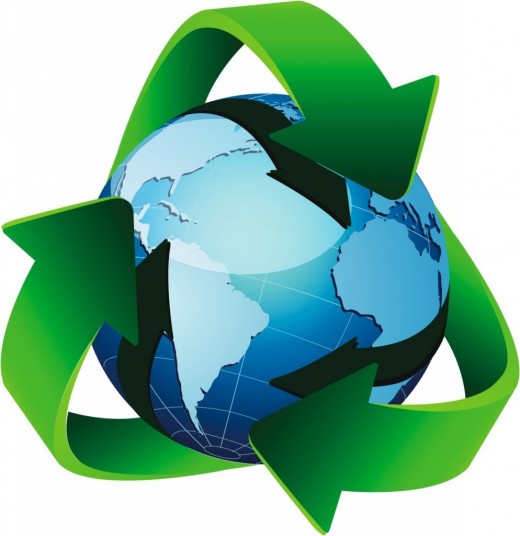
A Mixed Waste Collection.
- A curb side collection; is normally the usual way people deal with their recyclables. This is also considered as a mixed waste collection, that allows for various materials to be recycled, for instance a mix collection of recyclables could consist of plastic, glass, paper, cardboard, and aluminum. This is also a reasonably easy practice for anyone to participate in, which is only a matter of being able to recognize the desired materials allowed for this mixed collection of recyclables. For example, preferred items like; plastic bottles, plastic containers, glass bottles, cardboard boxes, newspapers, magazines, and tin cans.Whereas, these are company based recycling manufactures, that provide their customers with free recycling bins. A lot of recycling bins today are designed to be easily recognized, which are mark with slogans promoting recycling on a green or blue exterior, with the universal recycling symbol. Furthermore, after collection of the mixed waste, it is then taken to a central sorting facility where all the materials are sorted cleaned and stored, ready for recycling!
Recycling Banks.
- Textile recycling; is the term used for the process of recycling used clothing. Most communities today provide recycling banks for used clothing and used shoes, these are usually found in car-parks within a township or city, which are situated beside or at the back of a supermarket or shopping area. This also makes textile recycling a lot more convenient for regular users. Whereas, the widely accepted clothing and shoe recycling bins provided for public use today, come with high safety chutes that are easily opened and closed. There is also a set standard for textile recyclables: Rule, all textiles must be clean and dry before considered towards being accepted for recycling. Furthermore, after the textiles are collected sorted and stored, they are then recycled by a textile recycling industry, that use special equipment to remake the textiles into new pieces of clothing, wiping cloths and many other items.
- Recycling glass; is a very delicate process that involves; firstly, relying on the glass provider or the bottle bank user to sort the different colors of glass into the correct bank deposit. This process is generally easy to grasp, because most of the common types of consumer glass containers made today are either colorless glass, green glass, and brown or amber glass. Whereas, today recycling banks or collection points provide separate depositories for colorless, green, and brown or amber glass. These are large containers separated by different colors that represent the color of glass to deposit into each bin. Which is easily achieved by dropping the correct bottles into the appropriate colored bin. Glass is also considered to be perfect for recycling, because none of the material can be degraded in any way through conventional usage. Furthermore, studies have shown that every metric ton (1,000 kg) of waste glass recycled into new items saves 315 kilograms (694 lb) of carbon dioxide from being discharged into the atmosphere during the manufacture of new glass.
A Recycling Bank.
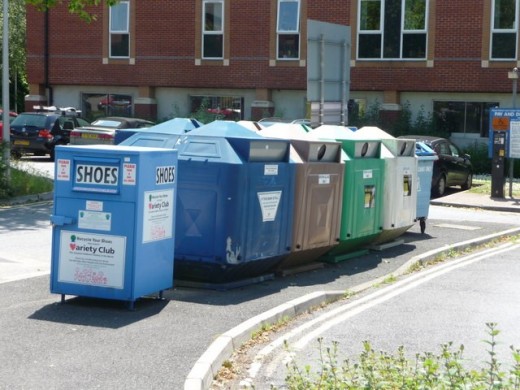
Household Appliances or Electronic waste.
- Appliance recycling; is today encouraged by many recycling companies, that also promote environmental awareness. With technology constantly advancing, a lot of people today are left with an accumulation of old appliances stored in their sheds or piled up in storage rooms. This would normally be small appliances like old kettles, deep fat fryers, toasters, microwaves, televisions, computers, radios, mobile phones, land-line phones, and other items. In some cases, this can even be larger appliances like a refrigerator, washing machine, or tumble dryer. Though finding a storage space for larger appliances can prove to be very challenging. Although, on purchasing a new appliance today, a lot of large stores offer to remove the old item free of charge, which is either given to charity or recycled. There are also a lot of recycling companies that offer cash for small or large appliances, which provide a collection point that allow people to cash in their smaller items, and for larger items people can also request for them to be collected from their homes. Whereas, these companies can be found at any local “recycling for cash website.” There are also a lot of charity based companies, where people can donate their old items for instance, The Salvation Army throughout different locations offer people a free pickup for large appliances, which can be found at any local “Salvation Army website.”
- Electronic waste; can also be categorized as recyclable household appliances, which is also referred to as E-waste. Though a lot of these e-waste appliances today contain circuit boards with precious metals like gold, silver, and platinum. For example, mobile phones, laptops, computers, and radios, that have been designed for recycling sometimes get stored away and forgotten about or trashed. Whereas, recycling these precious metals today has become a major challenge for recycling companies worldwide.
- Statistics show; that we dispose of around 350,000 mobile phones every day, according to EPA figures. That contrasts to over 152 million phones ending up in landfills every year. Also, The UN University has projected a 33% increase in global e-waste volumes between 2013 and 2017.
- US EPA or United States Environmental Protection Agency, affirms that only 12.5% of e-waste ends up being recycled. Whereas, e-waste disposal rates revealed that Americans throw so many phones away, containing the equivalent of $60 million in gold silver and platinum each year.
- For every 1 million cell phones recycled, approximately 35,200 lbs of copper, 770 lbs of silver, 75 lbs of gold, and 30 lbs of platinum is recycled.
- A ton of circuit boards contains an estimated 40-800 times more gold than one metric ton of ore. Also, there is 30-40 more copper in a ton of circuit boards than there is in a metric ton of ore.
A Composition of E-Waste.
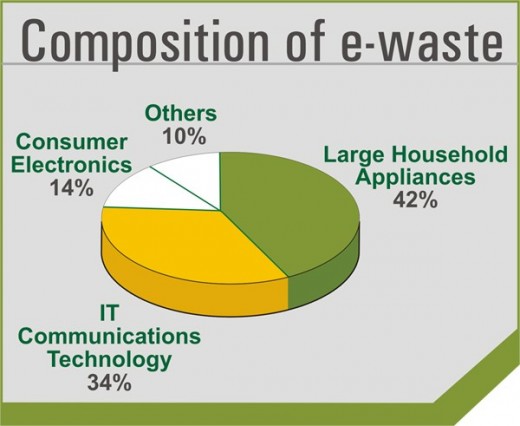
The Benefits of Recycling.
- Recycling materials; is today recognized as a scientifically approved solution to a lot of today’s environmental problems. Some of the benefits of recycling are for example, collecting recyclables comprising of various materials for recycling, contributes towards the consumption levels of the worlds natural resources. By conserving our natural resources, also reduces air and water pollution which can be caused by perilous disposal of waste. Another benefit of recycling is through e-waste, where many of the materials can be easily recycled and reused to create new appliances for our everyday use. Moreover, recycling reduces the amount of greenhouse gas emissions caused by manufacturing newly acquired products. Benefits of recycling are also known to be extended when responsible methods are used. In the USA today, responsible recycling aims to minimize the risks towards human health, and any harm done to the environment, which can be caused by disposing and dismantling recyclable materials.
How Recycling Works.
© 2017 George Gormley



